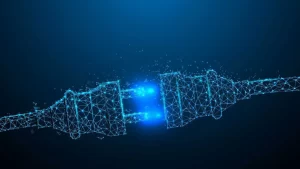DURING the last century and a half, electricity has evolved from a scientific curiosity, to a luxury for wealthy people and to a daily necessity in the developed and developing world. Just as water is necessary for survival, electricity is indispensable in daily life. Without electricity, our way of life comes to a grinding halt. Modern society requires smart, simple, safe, reliable, and economical electric power infrastructure for social, political, and economic activities. The infrastructure should be efficient, flexible to expand, economical to maintain and operate. Electricity was never invented: its properties were discovered, examined, and explained.
- Thales of Miletus a Greek in 600 AD wrote of static electricity that attracted pieces of straw and hair to rubbed rods of amber. In 1752, during a dangerous electrical storm, Benjamin Franklin flew a kite that had a metal key at the bottom of the string. When a bolt of lightning hit the kite, a spark of electricity flew from the key. From this experiment, Franklin invented the lightning rod, which attracts lightning and draws it into the ground. This saves many buildings from burning down. In 1779 Alessandro Volta invented the first source of continuous electric current in his experiments with non-static electricity. He created a battery out of stacks of zinc and copper, with weak acids in between each layer.
- In 1769 James Watt, a Scottish Engineer transformed the limited use steam engine into a mega power source and radically transformed the world from an agricultural society into an industrial one. In his honor, a unit of electric power was named “Watts”.
- Ampere (Amp), a unit of electric current named after André-Marie Ampère (1775- 1836), French mathematician and physicist, is considered the father of electrodynamics.
- The first practical application of electricity was the telegraph, invented by Samuel F.B. Morse in 1837. The need for electrical engineers was not felt until some 40 years later, upon the invention of the telephone (1876) by Alexander Graham Bell and of the incandescent lamp (1878) by Thomas A. Edison. These devices, and Edison’s first central generating plant in New York City (1882), created a large demand for men trained to work with electricity.
- Electrical Engineering covers power, electronics, control systems, signal processing and telecommunications field. In engineering practice, the distinction between electrical engineering and electronics is based on the comparative strength of the electric currents used. In this sense, electrical engineering is the branch dealing with “heavy current”—that is, electric light and power systems and apparatuses— whereas electronics engineering deals with such “light current” applications as wire and radio communication, the stored-program electronic computer, radar, and automatic control systems.
The distinction between the fields has become less sharp with technical progress. For example, in the high-voltage transmission of electric power, large arrays of electronic devices are used to convert transmissionline current at power levels in the tens of megawatts. Moreover, in the regulation and control of interconnected power systems, electronic computers are used to compute requirements much more rapidly and accurately than is possible by manual methods. The rapid proliferation of new discoveries, products, and markets in the electrical and electronics industries has made it difficult for workers in the field to maintain the range of skills required to manage their activities. Consulting engineers, specializing in new fields, are employed to study and recommend courses of action.










